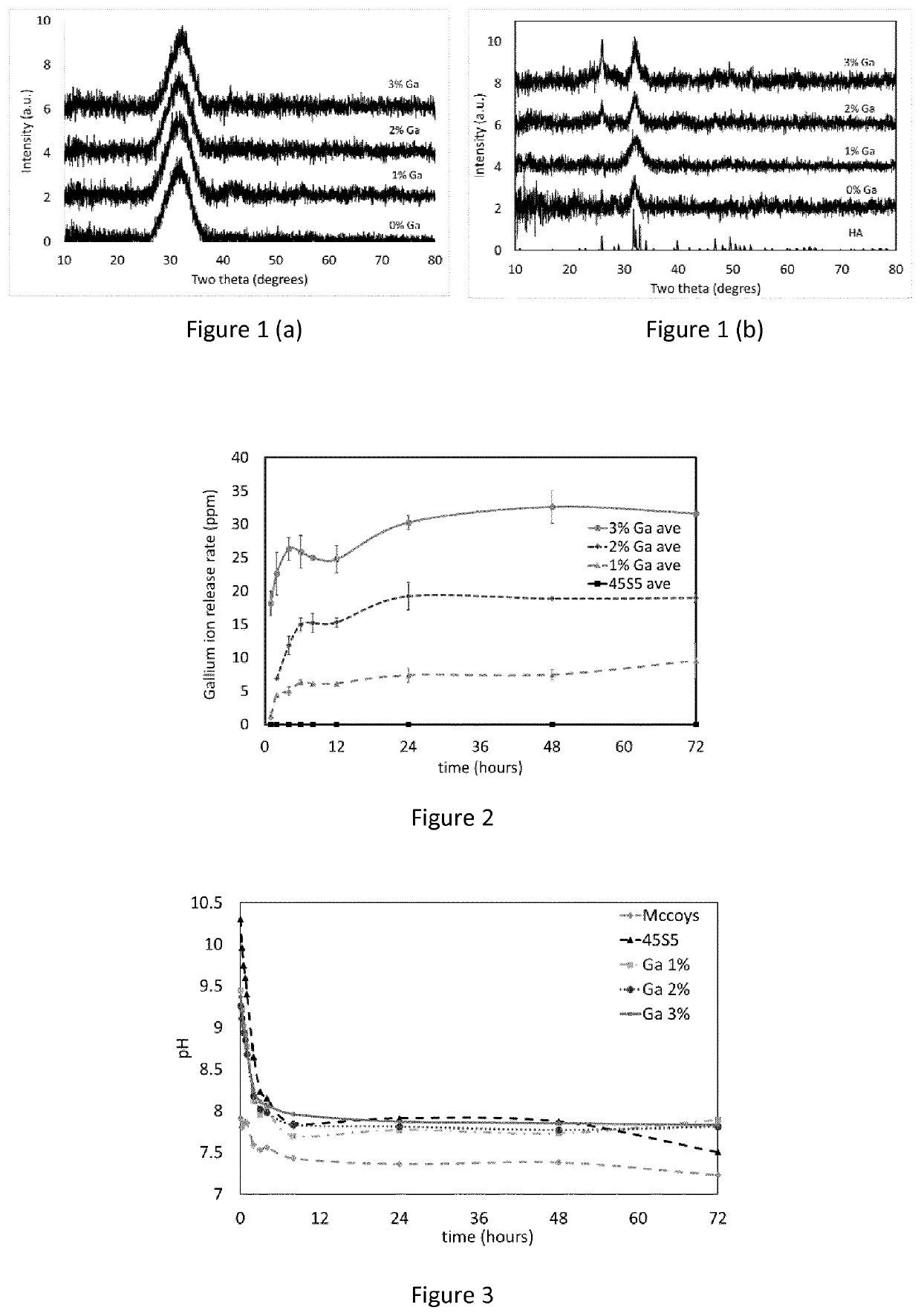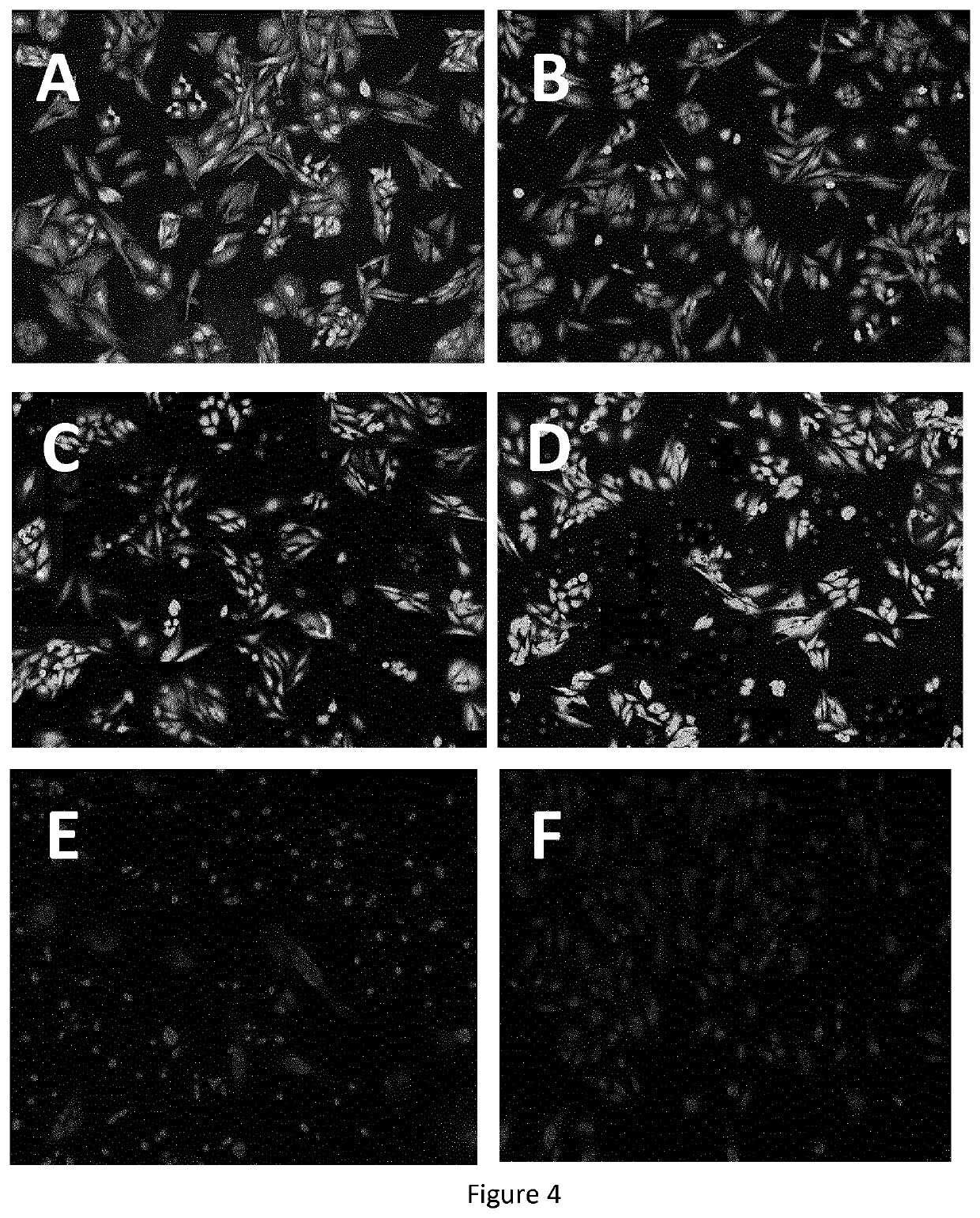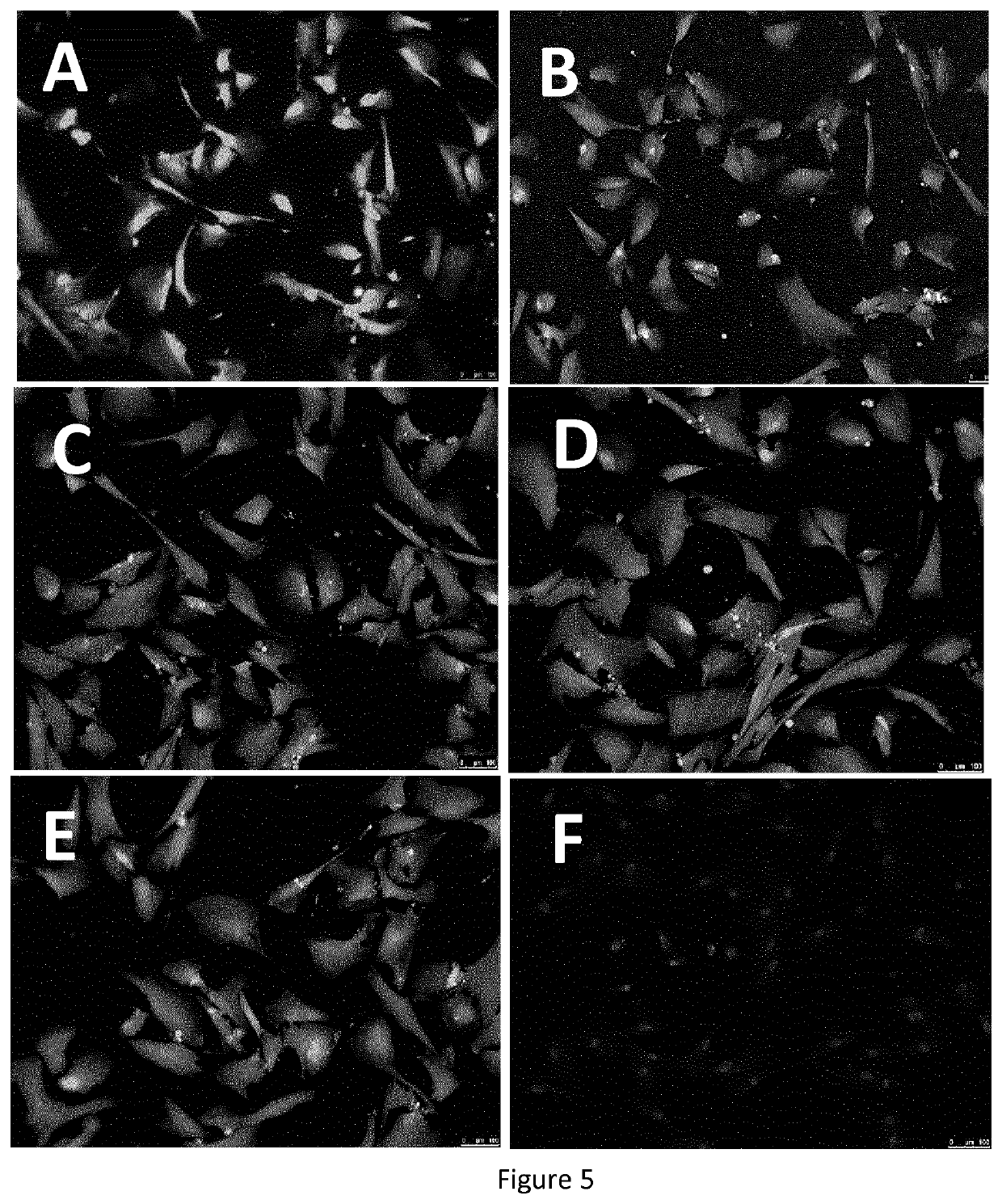Therapeutic material
a technology for treating bone cancer and therapeutic materials, applied in the field of therapeutic materials for treating bone cancer, can solve the problems of poor survival rate of osteosarcoma patients, inability to adapt to sarcoma applications, and inability to incorporate radioactive beta emitting ions, etc., and achieve the effect of increasing the network connectivity of the glass composition and reducing connectivity
- Summary
- Abstract
- Description
- Claims
- Application Information
AI Technical Summary
Benefits of technology
Problems solved by technology
Method used
Image
Examples
Embodiment Construction
Glass Preparation and Analysis
[0140]Melt-quench derived 45S5 Bioglass, (SiO2)46.1(CaO)26.9(Na2O)24.4(P2O5)2.6, and gallium doped analogues were prepared using SiO2 (Alfa Aesar, 99.5%), CaCO3 (Alfa Aesar, 99.95-100.5%) and Na2CO3 (Sigma-Aldrich, 99.5%), NH4H2PO4 (Sigma-Aldrich, 99.5%), and Ga2O3 (Alfa Aesar, 99.99%).
[0141]The precursors were weighed in the appropriate molar ratio to give (Ga2O3)X(SiO2)46.1-3X(CaO)26.9(Na2O)24.4(P2O5)2.6 where X=1, 2 and 3% as shown in Table 1 below. Figures in brackets show the resulting mass (in grams) of each component in the bioactive glass composition.
[0142]
TABLE 1ControlEx 1Ex 2Ex 3Ex4Ex5Ex 645S5Ga1%Ga2%Ga3%Ga4%Ga5%Ga10%Bioglass ™glassglassglassglassglassglassSiO246.143.941.739.837.635.525.0(8.97)(8.33)(7.80)(7.24)(6.70)(4.30)Na2O24.424.925.425.926.426.929.4(5.25)(5.25)(5.25)(5.25)(5.25)(5.25)CaO26.927.528.128.629.129.732.4(5.23)(5.23)(5.23)(5.23)(5.23)(5.23)P2O52.62.72.72.82.82.93.1(1.28)(1.28)(1.28)(1.28)(1.28)(1.28)Ga2O3012.134510(0.65)(1.30)...
PUM
| Property | Measurement | Unit |
|---|---|---|
| mol % | aaaaa | aaaaa |
| mol % | aaaaa | aaaaa |
| mol % | aaaaa | aaaaa |
Abstract
Description
Claims
Application Information
 Login to View More
Login to View More - R&D
- Intellectual Property
- Life Sciences
- Materials
- Tech Scout
- Unparalleled Data Quality
- Higher Quality Content
- 60% Fewer Hallucinations
Browse by: Latest US Patents, China's latest patents, Technical Efficacy Thesaurus, Application Domain, Technology Topic, Popular Technical Reports.
© 2025 PatSnap. All rights reserved.Legal|Privacy policy|Modern Slavery Act Transparency Statement|Sitemap|About US| Contact US: help@patsnap.com



